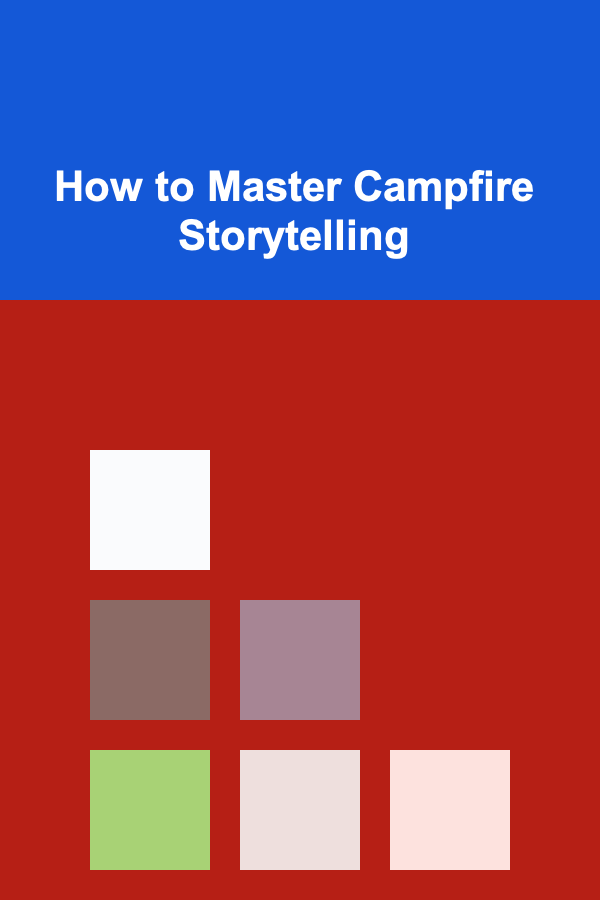
How To Craft Effective Exposition
ebook include PDF & Audio bundle (Micro Guide)
$12.99$9.99
Limited Time Offer! Order within the next:

Exposition is one of the most important narrative elements in storytelling. It's the foundation on which a story is built, providing essential information that sets up the world, characters, and conflicts. Whether you're writing a novel, short story, play, or screenplay, understanding how to craft effective exposition is crucial for engaging your audience and ensuring that they stay invested in the narrative.
Exposition isn't just about dumping information onto the reader; it's about weaving necessary details into the story in a way that feels natural and compelling. Crafting effective exposition involves striking a balance between clarity and subtlety, engaging the reader without overwhelming them.
This article will explore the purpose of exposition, the different types, and techniques to effectively craft it. By the end, you'll understand how to give your story depth and richness without bogging down the pacing.
What is Exposition?
Exposition is the part of a narrative where essential background information is revealed to the audience. This information can include details about the setting, characters, events that happened before the start of the story, and any necessary context for understanding the current conflict.
The key to effective exposition is delivering the information in a way that feels seamless and engaging. It's an art form that requires subtlety, timing, and an understanding of what your audience needs to know at any given point in the story.
The Role of Exposition in Storytelling
Exposition plays several critical roles in storytelling. Here are some of the primary functions:
- World-building: It introduces the setting, time period, and the rules of the world in which the story takes place. This is especially important in genres like science fiction, fantasy, and historical fiction, where the world may differ significantly from the real world.
- Character Development: Exposition provides insight into the characters' pasts, motivations, and relationships, helping the audience understand why characters behave the way they do.
- Conflict Setup: It lays the groundwork for the central conflict of the story by providing information about the protagonist's situation, the challenges they face, and the forces at play.
- Tone and Mood: Exposition helps establish the emotional tone and mood of the story, whether it's mysterious, whimsical, tragic, or hopeful.
Types of Exposition
Exposition can be delivered in a variety of ways, and understanding these methods will help you choose the best technique for your story.
1. Direct Exposition
Direct exposition is when the information is explicitly stated, usually through dialogue or narration. This method can be effective when it's necessary to quickly establish key details, but it can also feel clunky if overused. Too much direct exposition can bog down the story and make it feel like a lecture rather than an engaging narrative.
- Examples :
- In The Lord of the Rings, J.R.R. Tolkien often uses direct exposition, particularly in the opening chapters, to explain the history of Middle-earth and the importance of the One Ring.
- In many detective novels, the detective character will provide direct exposition to explain clues and solve the case.
Direct exposition is often best used sparingly and in conjunction with more subtle techniques.
2. Indirect Exposition (Show, Don't Tell)
Indirect exposition involves revealing information through actions, dialogue, and observations rather than explicitly stating it. This technique relies on the principle of "show, don't tell," where the audience learns about the world, characters, and backstory through what they experience rather than through overt explanations.
- Examples :
- In Harry Potter and the Sorcerer's Stone, much of the magical world is revealed through Harry's experience and interactions with other characters, such as Hagrid's introduction to Hogwarts. Instead of telling us about the wizarding world, J.K. Rowling shows us through Harry's eyes.
- In The Great Gatsby, Fitzgerald uses indirect exposition to reveal key details about Gatsby's past and his feelings for Daisy through the actions and dialogue of the characters.
Indirect exposition is often more engaging and immersive, allowing the reader to discover the world and characters organically.
3. Exposition Through Flashbacks
Flashbacks are a useful tool for revealing past events that have shaped the characters and the plot. By temporarily taking the audience to an earlier time in the story, flashbacks can provide crucial background information while maintaining narrative tension.
- Examples :
- In The Godfather, flashbacks to Vito Corleone's rise to power help explain the motivations of both Vito and Michael.
- The Night Circus uses flashbacks to reveal the history of the circus and the conflict between the two magicians, creating suspense and layering the exposition throughout the novel.
Flashbacks are an effective way to give the audience context without bogging down the present action of the story. However, they should be used strategically to avoid disrupting the flow of the narrative.
4. Exposition Through Setting and Symbolism
Setting itself can provide a great deal of exposition. A well-chosen setting can tell the reader a lot about the world, the time period, and even the characters. Symbolism and the environment can also provide indirect information about a character's internal state or the central themes of the story.
- Examples :
- In Wuthering Heights, Emily Brontë uses the bleak, isolated moors as a symbol of the emotional turmoil and unrest between the characters.
- In 1984, George Orwell uses the oppressive, decaying setting of Airstrip One to reveal the dehumanizing effect of totalitarian control.
Setting and symbolism are often most effective when used to reinforce the tone and themes of the story.
Techniques for Crafting Effective Exposition
Now that we've explored the types of exposition, let's look at the techniques you can use to craft it effectively.
1. Integrate Exposition Gradually
One of the most important principles of good exposition is to reveal information gradually, rather than dumping it all at once. This keeps the story moving forward and maintains the audience's interest. It also allows the reader to digest the information at a pace that feels natural.
- How to Do It :
- Spread out key details over multiple scenes or chapters.
- Use subtext and implication rather than outright explanation, encouraging the reader to piece together the information themselves.
2. Use Dialogue to Convey Exposition
Dialogue can be a natural and engaging way to deliver exposition, but it requires finesse. Characters should reveal information in a way that feels organic to their personalities and situations, not like they're just talking to inform the reader.
- How to Do It :
- Avoid "info-dumping" through long speeches or unnatural conversations.
- Use subtext---have characters imply things rather than stating them directly.
- Make sure the dialogue serves a dual purpose: advancing the plot and revealing information.
3. Avoid Overloading the Reader with Information
While exposition is necessary, too much information all at once can overwhelm the reader and detract from the pacing of the story. Instead of throwing everything in at once, focus on delivering only the most critical details that the reader needs at any given moment.
- How to Do It :
- Limit the amount of exposition in any one scene.
- Trust the reader to piece things together from context.
- Prioritize showing over telling---use action, setting, and dialogue to reveal information in a way that feels natural.
4. Use the Protagonist's Point of View
Often, exposition can be more effective if it's tied to the protagonist's perspective. This allows the reader to experience the world and the backstory through the eyes of the main character, creating a more immersive experience.
- How to Do It :
- Show the protagonist's internal thoughts and reactions to the world around them.
- Use the protagonist's limited knowledge to gradually reveal the larger world and story context, just as they would learn it themselves.
5. Employ Symbolism and Foreshadowing
Symbolism and foreshadowing can be powerful tools for exposition because they subtly suggest key elements of the plot or themes without explicitly stating them. This technique creates intrigue and encourages the reader to engage with the story on a deeper level.
- How to Do It :
- Introduce symbols that resonate with the themes of the story (e.g., an object that represents a character's past).
- Drop subtle hints about future events, which will later be explained or revealed in more detail.
Balancing Exposition with Action and Conflict
The most effective exposition is woven into the fabric of the narrative, never stopping the action or slowing the plot unnecessarily. A good rule of thumb is to balance exposition with action, conflict, and character development. This creates a dynamic narrative that keeps the reader invested and curious about what happens next.
Exposition as Part of the Story's Momentum
Exposition should never feel like a roadblock in your story. Instead, think of it as part of the momentum. As the conflict escalates and characters grow, new pieces of exposition can be revealed, heightening the stakes and enriching the narrative.
Conclusion
Crafting effective exposition is an essential skill for any writer. By gradually introducing key information, using dialogue and setting to convey meaning, and ensuring that the exposition serves the overall narrative, you can create a story that's rich in detail and engaging for the reader. Effective exposition doesn't just inform; it deepens the emotional resonance of the story and helps the audience invest in the characters and their journey. Mastering exposition is a subtle art, but it's one that can transform your storytelling, making your narrative both compelling and immersive.

How to Budget for Family Vacation Plans Without Breaking the Bank
Read More
How to Clean Windows Without Leaving Streaks
Read More
Unlocking Success as a Fleet Manager: A Comprehensive Guide to Fleet Optimization
Read More
How to Master Campfire Storytelling
Read More
How to Design Sustainable Smart Cities
Read More
How to Build a Leadership Development Planner for Diverse Leadership
Read MoreOther Products

How to Budget for Family Vacation Plans Without Breaking the Bank
Read More
How to Clean Windows Without Leaving Streaks
Read More
Unlocking Success as a Fleet Manager: A Comprehensive Guide to Fleet Optimization
Read More
How to Master Campfire Storytelling
Read More
How to Design Sustainable Smart Cities
Read More